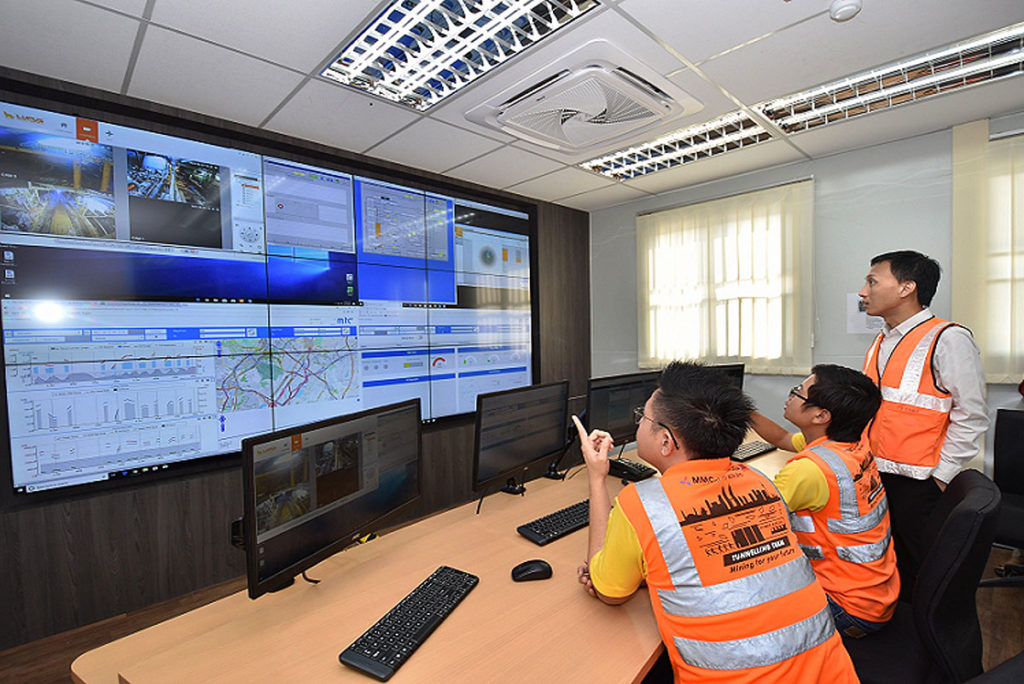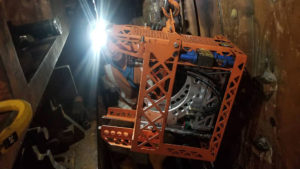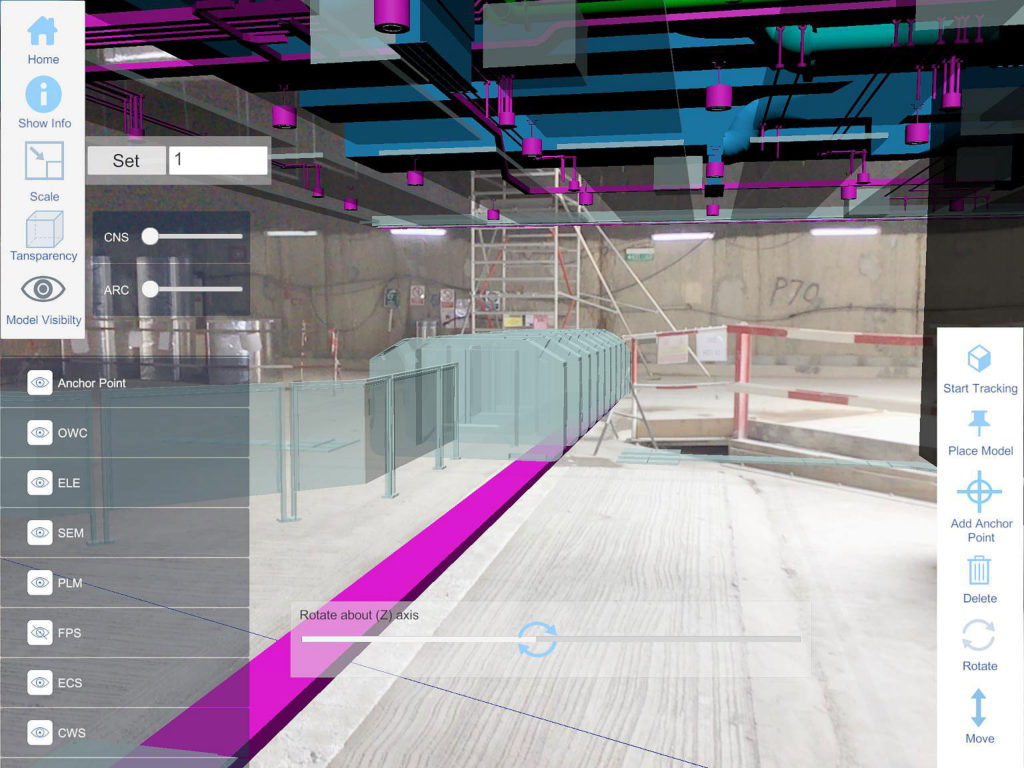Enabling Technologies through our People
In Europe, advanced technologies have proven a significant growth potential especially with technologies such as the Internet of Things (IoT), industrial data, advanced manufacturing, robotics, 3D printing, blockchain technologies and artificial intelligence (AI).
What these technologies offer are limitless opportunities that can enable industries across the globe to expand leadership in the emerging markets for the products and services of the future. This is the journey we see ourselves embarking on.
Undertaking the digitising route in the tunnel engineering realm as we’ve experienced, offers the unparalleled opportunity for engineers to interact and transform from real world to the digital world of tunnelling.
The reason for developing Industry Revolution (IR) 4.0 enabling technologies from an outside perspective is simple: we either adapt to technological advancements of the times or risk being left behind.
But for Gamuda, the need for continuous innovation, especially through IR 4.0 enabling technologies goes far beyond the need to compete. The Group’s engineering team seeks to increase cross-collaboration between teams with technologies such as Big Data, Virtual Reality (VR), Augmented Reality (AR) to enable cross-collaboration and sharing of insights in an intuitive manner, resulting in an improvement of synergies within the Group across various projects. It allows greater efficiencies and productivity – for example, using data, sensors and AI to further optimise our processes and avoid pitfalls and risks that would delay our projects.

Our engineering team continuously integrate into developing IR 4.0 enabling technologies by creating a platform for driving continuous growth, increasing productivity, raising innovation capabilities and creating digitally-skilled talent force in the below tunnelling arenas.
Autonomous Tunnel Boring Machine (A-TBM)
Tunnel boring machine (TBM) operation requires control over multiple subsystems, where in a typical setting, the operator will need to concentrate on each subsystem in turn, resulting in slower response time and productivity. Through AI control algorithms, the A-TBM system controls various operational subsystem of the TBMs, such as auto-steering (driving of TBM to the design tunnel alignment), auto-advance (controls of parameters such as thrust force and cutterhead RPMs), auto-excavation and auto-slurry, which refers to the control of the excavation volume balance and the slurry system. With the A-TBM system, local tunnel operatives are digitally upskilled as systems supervisors of the A-TBM system.
The A-TBM provides tangible improvements in productivity, safety, and quality for tunnel construction. It improves productivity by optimising each drive to its optimal parameters. With less need for interventions, less people are put under compressed air, thus, improving safety at project sites. With better adherence to the design tolerance, we can avoid costly mistakes that occur when operators are fatigued or inexperienced. Safety is further improved by allowing tunnellers to accurately control the crown pressure of the TBMs and to adjust parameters at regular intervals, autonomously. Accurate crown pressure control is important to reduce the risk of sinkholes.
We also built our A-TBM system around our Variable Density TBMs (VD-TBMs) for the tunnelling of MRT Putrajaya Line, which proves that our A-TBM can be deployed on a variety of TBMs, customised to the tunnelling needs of the Group’s projects. The MRT Putrajaya Line is a perfect testing ground for our A-TBM system as the underground alignment traverses through existing infrastructures and highly variable geological conditions, with over a dozen interfaces between the geologies. Our system has been deployed across all these geologies which has provided a wealth of information to optimise the behaviour of our system.
Tunnel Insight System
Developed in-house by the Group’s innovation team, we have been prototyping a cloud-based system to ingest, store, visualise and transform our data for our TBMs. This technology enhances the A-TBM performance, increased 360° awareness and improved risk management in tunnelling. This system serves to be three things: descriptive, predictive and prescriptive.

Descriptive: Enabling visualisation of large amounts of data in a user-friendly manner where engineers are able to plot, analyse and view live data using mobile phones and laptops. This enables our people to have easy access to data, anytime and anywhere, allowing us to make quick data-driven decisions.
Predictive: By building AI algorithms on the cloud, we can spot clear trends and patterns in the sensor data which our Tunnel Crew can easily miss as a result of shift changes or trends that occur over long periods of time. These automatically generated insights had spotted patterns before unplanned interventions that indicated tool malfunctions.
Prescriptive: Insights generated can be used in a feedback-loop to influence the outcome of a process, which is what we hope to currently achieve with our next focus – Tunnel Insight 2.0, providing unprecedented capabilities to utilise the power and capacity of cloud computing to churn large amount of data to influence A-TBM processes.
ROBot Assisted Cutter Change Apparatus (ROBACCA)
Our ROBACCA is a human assistive and autonomous robotic tool which reduces the exposure of humans to dirty and dangerous tunnelling environments. It represents the first step towards fully automated maintenance of TBMs. Our developed ROBACCA is currently in the final prototyping phase and will move into beta testing soon. Design, development and prototyping have been carried out by our in-house engineers and programmers in partnership with local manufacturing and automation SMEs with 100 percent local fabrication and components.

Building Information Modelling in Augmented Reality (BIMAR) application
A recent Winner of Malaysia Technology Excellence Award 2020 – Augmented Reality & Virtual Reality – Engineering Category, the BIMAR app was developed by our in-house engineers extending and mating our Building Information Modelling (BIM) technology with Augmented Reality (AR). By greatly minimising errors while saving time and improving the accuracy of their construction validation during its test implementation for the works on the MRT Putrajaya Line, the benefits that BIMAR brings satisfies both consultants and contractors. BIMAR allows for 3D generated walkthroughs which results in real-time detection of clashes and errors on-site, thus, minimising rework costs and enhancing collaboration.

Next Gen 5G Internet of Things (IoT)
We are leveraging modern 5G networks to deliver real-time monitoring of ground and building conditions offering increased safety and reduced risk during critical tunnelling operations. The large quantity of sensors, the scale of our projects and the criticality of real-time information make this an ideal IoT use case. Complementary data streams will be fed into our A-TBM and Tunnel Insight systems, providing upskilling opportunities for software engineers to develop IoT and cloud-based data pipelines and cultivation of local supply chains for IoT devices.
Continuous growth, increasing productivity, raising innovation capabilities and creating higher skilled digital employment
With IR 4.0 enabling technologies in place by and for our Tunnel experts, we allow ourselves to have full situational awareness of our tunnelling projects from the TBM, to the surrounding structures and ground. IR 4.0 technologies provide us the opportunity to answer business and cost-related questions effectively to make data-driven decisions.
With new technologies and innovative concepts demonstrated, our engineering team acquired a better understanding of complex processes and procedures as well as a high level of cost-efficiency. Of course, as time goes by, we will face newer challenges in future rail projects. These challenges will not only be limited to managing large amounts of data, improving timelines, cost benefits and even the agility within our business process, as demonstrated during COVID-19.
For now, by developing IR4.0 enabling technologies in-house, we are creating space for more upskilled digital employment in tunnel construction, bridging the digital employment gap in Malaysia; and we are preparing for the fast paced digital infrastructure development seen around the world.

